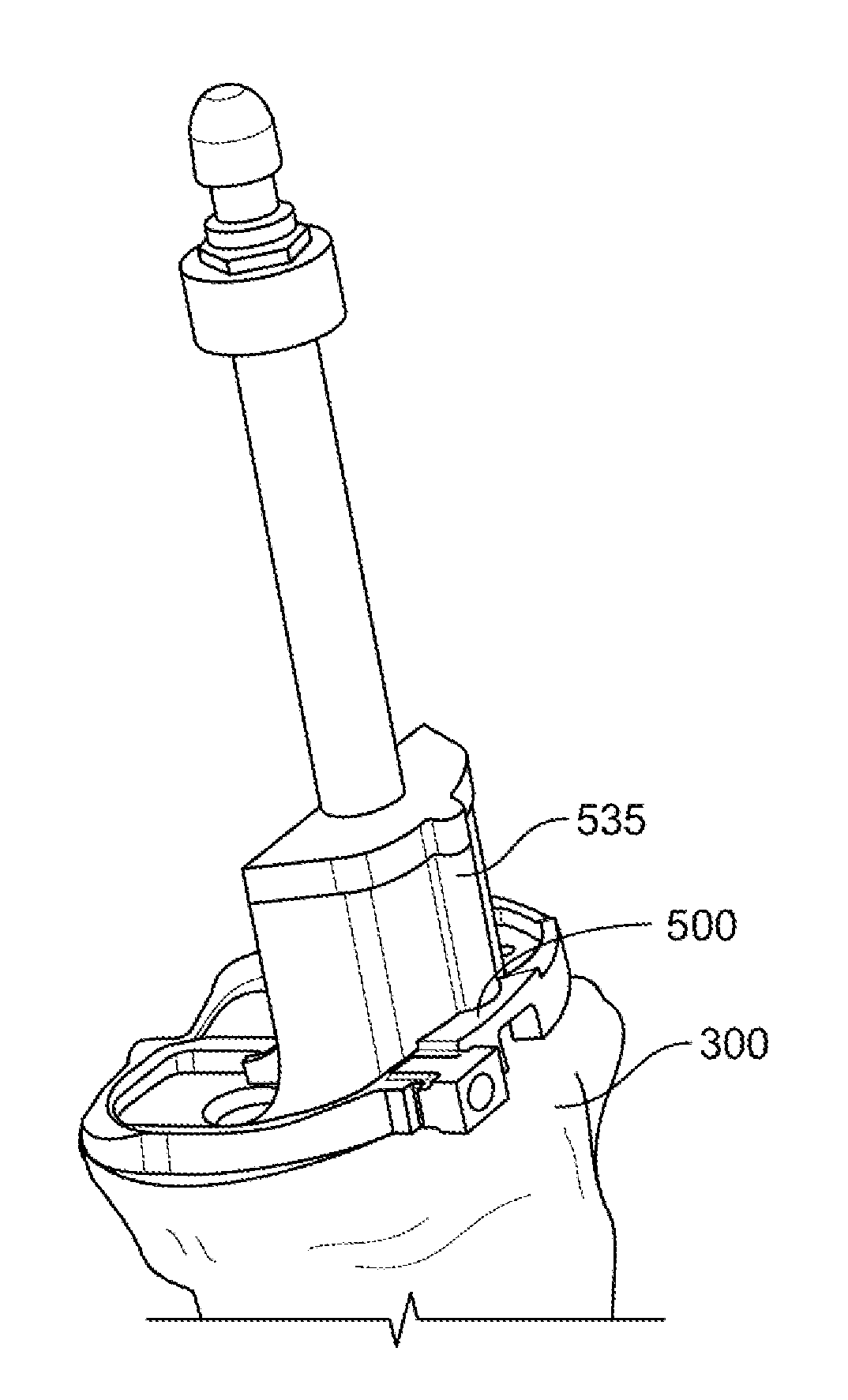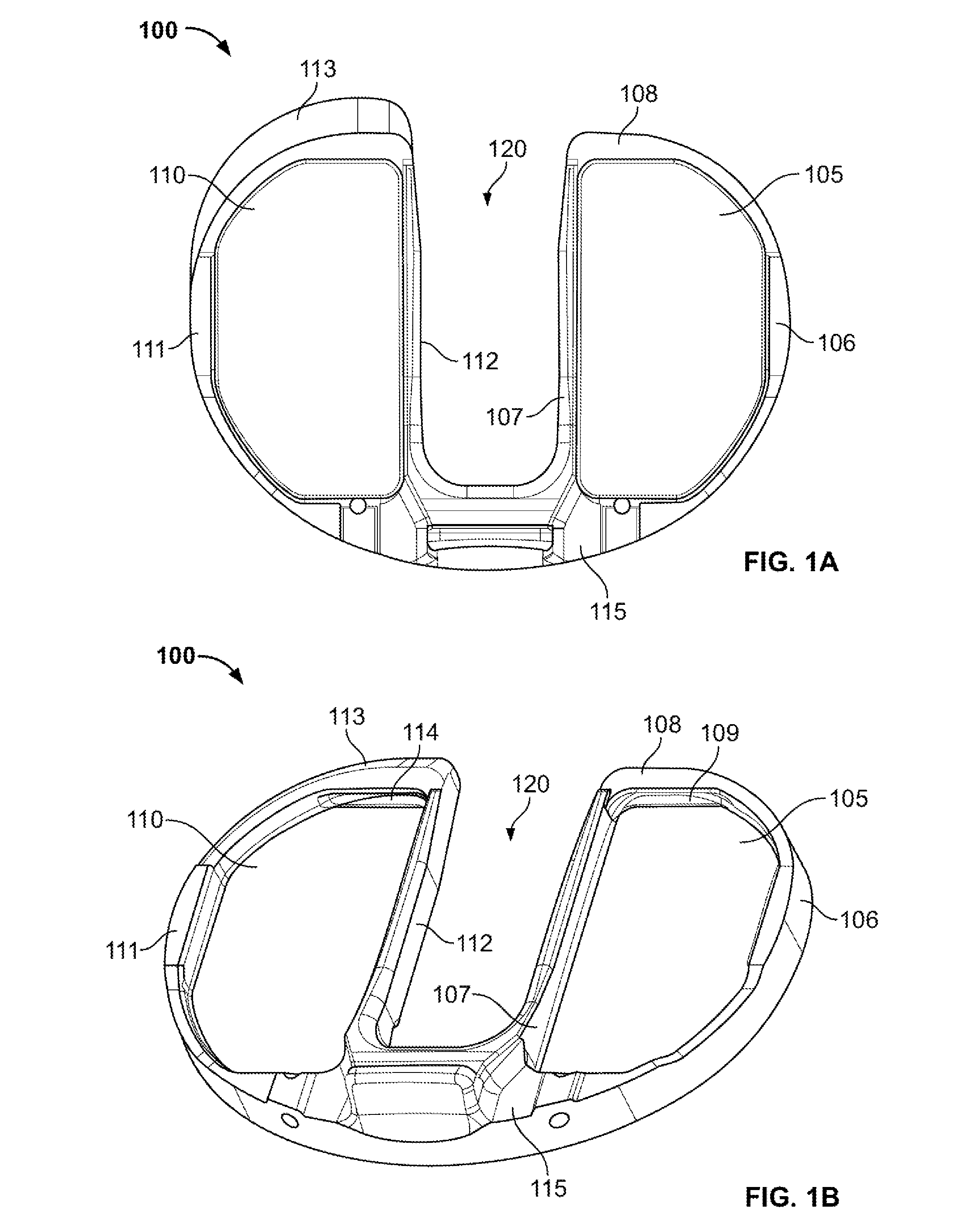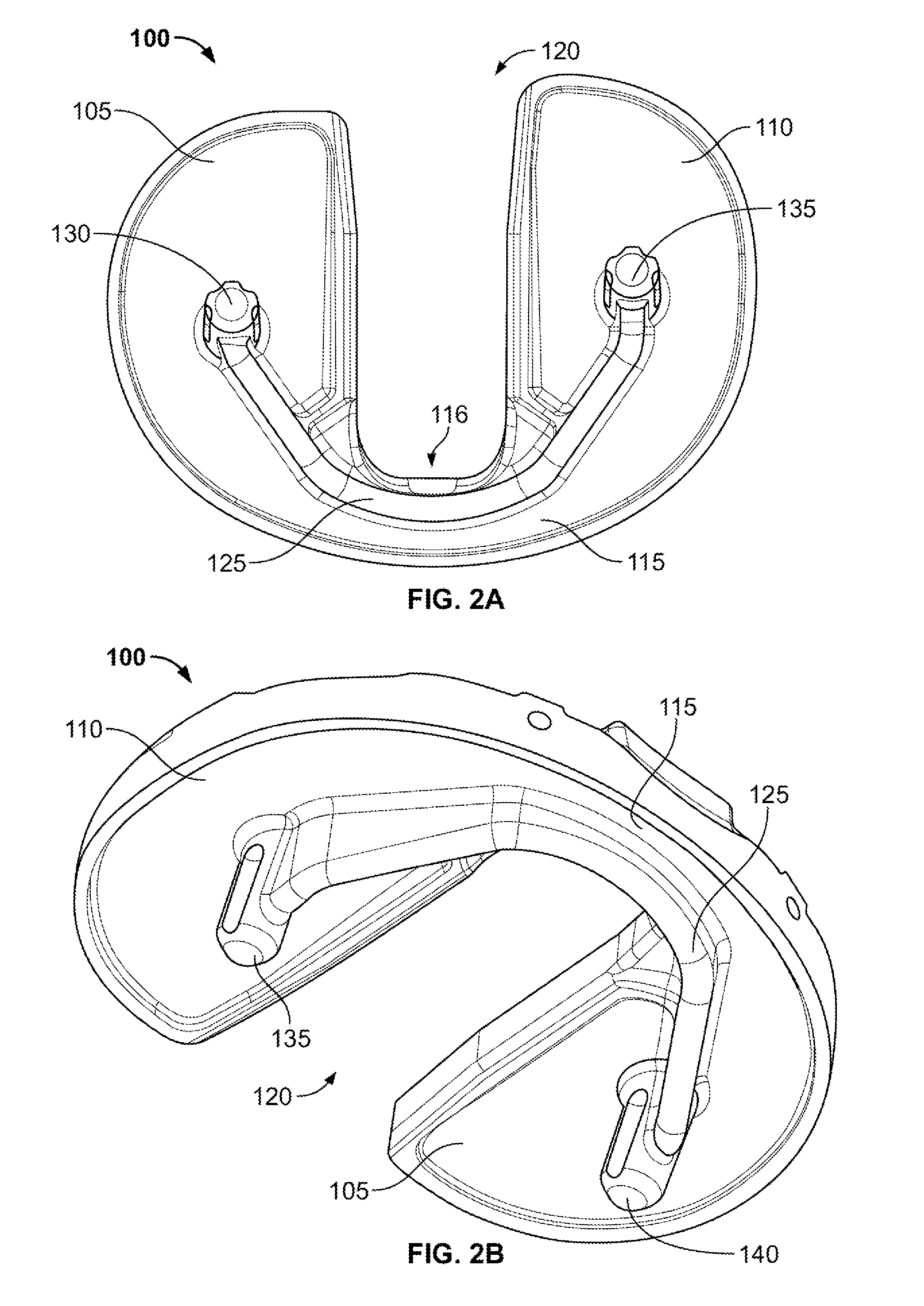Bicruciate retaining tibial implant system
a retaining tibia and implant system technology, applied in the field of retaining tibia implant system, can solve the problems of less than optimal instrumentation and surgical technique, less than optimal tibial kinematics, and more difficult surgery
- Summary
- Abstract
- Description
- Claims
- Application Information
AI Technical Summary
Benefits of technology
Problems solved by technology
Method used
Image
Examples
Embodiment Construction
[0052]In the following description, certain directional terms are used. Generally, “proximal” refers to a location closer to the heart, while “distal” refers to a location farther from the heart. “Superior” refers to a location closer to the head while “inferior” refers to a location closer to the feet. “Medial” refers to a location closer to the midline of the body, while “lateral” refers to a location farther away from the midline of the body. “Anterior” refers to a location closer to the front of the body, while “posterior” refers to a location closer to the back of the body. With reference to the figures provided, identical numbers generally refer to similar or identical features. When ranges of values are provided, it should be understood that all values within the provided range are included, as well as all ranges within the range provided. For example, a range of 2 to 8 includes the values of 3 and 4, as well as the ranges of 4 to 7, as well as 3 to 5.
[0053]Generally, the des...
PUM
 Login to View More
Login to View More Abstract
Description
Claims
Application Information
 Login to View More
Login to View More - R&D
- Intellectual Property
- Life Sciences
- Materials
- Tech Scout
- Unparalleled Data Quality
- Higher Quality Content
- 60% Fewer Hallucinations
Browse by: Latest US Patents, China's latest patents, Technical Efficacy Thesaurus, Application Domain, Technology Topic, Popular Technical Reports.
© 2025 PatSnap. All rights reserved.Legal|Privacy policy|Modern Slavery Act Transparency Statement|Sitemap|About US| Contact US: help@patsnap.com



